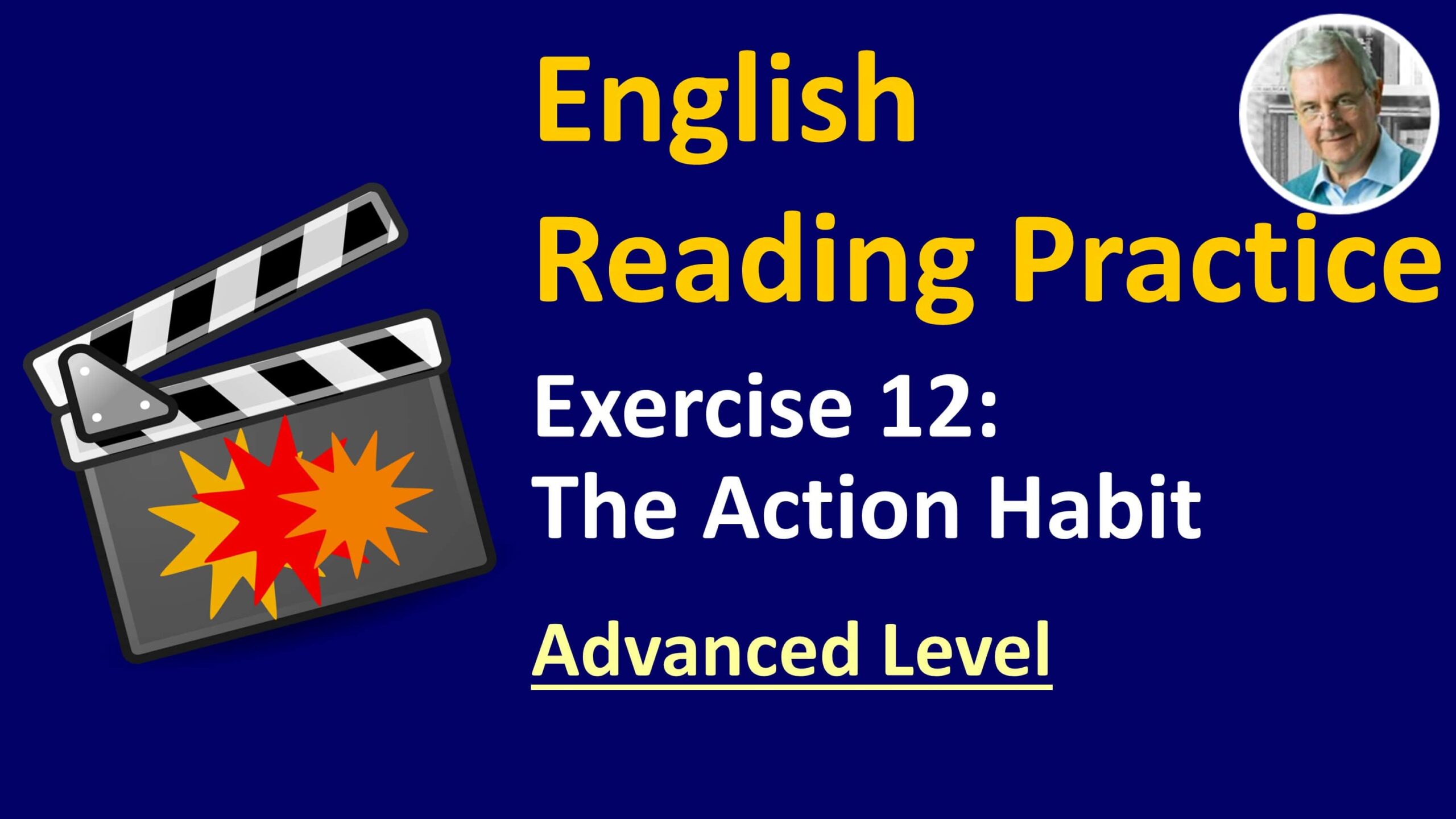ENGLISH Reading Exercise #12 (Intermediate)
ENGLISH Reading Exercise #12 (Intermediate) – The Action Habit
ENGLISH READING PRACTICE PLAYLIST – CLICK HERE:
https://www.youtube.com/playlist?list=PL7LFrjIsjhMlgrwrdTaeifxmuXwX7Ofv8
To improve your English fluency and confidence when speaking, use the Synchronized Reading Method. Be sure to watch the Introduction video in the link above first, to understand the methodology. These English reading practice sessions will dramatically improve your English fluency.
These exercises are designed for beginner to intermediate students who want to sound like a native speaker. By reading along with the teacher at the same time, with the teacher’s voice superimposed over their own, students start to self-correct in the areas of pronunciation and fluency, learning to read and speak in natural word groups.
If you find the pace is too slow, go to the Advanced version, and repeat until you are fluent in sync with the teacher’s reading.
Here is a transcript of the video: English Reading Practice: Exercise 12 (Intermediate) – The Action Habit
Be sure to watch the introductory video to this playlist before doing this exercise.
Click on the link below in the Description . . .
(https://youtu.be/IOeaBha6dUU)
Instructions
1. Turn up the volume so the teacher’s voice is loud.
2. Read the words in red out loud at the same time as the teacher.
3. Pay attention to the teacher’s voice intonation and the word groups.
4. If you find the speed is too slow, go to the playlist and choose the Advanced version.
5. Check any new words in a dictionary to fully understand the text.
Let’s start:
Develop the Action Habit
What is the action habit? It is a behaviour pattern where a person takes action rather than procrastinate. Behaviour patterns can be developed through small, easy steps which are repeated.
What is the benefit of developing the action habit? It can transform your life. It can help you to conquer fear and worry. It can give you a sense of great satisfaction, and increase feelings of self-worth. It is even used by healthcare professionals under the label: Occupational Therapy. It involves the therapeutic use of everyday activities or occupations to help patients overcome physical, mental and emotional issues.
In his book, “How to Stop Worrying and Start Living”, author Dale Carnegie cites the example of the Quakers (a Protestant Christian denomination) in Philadelphia, U.S.A. back in 1774. A visitor to a Quaker sanitorium was shocked to see patients who were suffering with mental illness, working and spinning flax. His first conclusion was that they were being exploited.
But then the administrators explained that the work actually helped the patients regain mental stability. This therapy is good not only for those with mental emotional limitations, but for everyone who would like to feel confident, and possess a healthy measure of self-respect.
So how can a person develop the action habit? The key is to spend more time doing than thinking. The second key is to take small steps. For example, many people have a problem getting out of bed in the morning. The alarm rings, a hand comes out to mute it, and then they fall back to sleep again, or just lie there resenting the fact they have to get up.
A person with the action habit takes action right after the alarm rings. It may be a simple movement like putting one leg out of the bed and placing a foot on the floor. Then swinging the other leg over and standing up for a few seconds. Then slowly walking to the bathroom, running the shower, or whatever the morning routine is. All this is done without conscious thought. It should be an automatic action. Within minutes, we start to feel better.
Here are two other tips for developing the action habit: 1. If you don’t know where to start, break the task into small easy steps. Choose one positive action and just start. 2. Don’t overthink the matter. Overthinking is when a person keeps dwelling on a matter, worrying about it, going over and over a decision wondering whether it was the right one. This can paralyze a person.
So to summarize, what are the benefits of developing the action habit?
1) you reach many goals
2) it builds self-confidence and self-respect
3) you help others
4) it improves quality of your life
Why not begin today by making a list of all the jobs you need to do at home or at work, pick one, identify one positive action you can take, and start. In a few weeks you will be amazed at how much you have accomplished!
That is the end of the reading.
Repeat this exercise many times until you can synchronize your reading with the teacher.
Practice other exercises in this playlist and see a major improvement in your English speaking fluency.
Has this video helped you?
LIKE | SHARE | COMMENT NOW!
Build A Powerful English Vocabulary with my FREE course on UDEMY
Go to: http://goodenglish.online
Now you have completed this English Reading Practice, try this one:
English Reading Practice: Exercise 11 (Intermediate) Read and Remember


